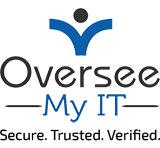Dance company grows with tech support, planning
Before and after: Here is a look at the growth the Dallas Black Dance Theatre has been able to achieve in 11 years, partly by having Oversee My IT run its technology:
- Employees:
- Jan. 2008: 3.
- June 2019: 30.
- Annual budget:
- Jan. 08: $1.5 million.
- Most since then: $5.2 million.
- Enrollment, Dallas Black Dance Academy:
- Jan. 08: 250.
- June 2019: 550.
Source: Zenetta Drew, DBDT executive director
A host of heroes have helped the Dallas Black Dance Theatre more than triple its annual budget in the 11 years since the nonprofit moved into its current headquarters in the former Moorland YMCA.
Choreographers, teachers and sponsors are among those who fostered resources to expand the 44-year-old nonprofit’s programs throughout Texas and beyond the red-brick building, which was a centerpiece of local African-American life during segregation.
But one of the most important contributors may be the least known: Oversee My IT, or OMT, an Irving-based technology services company.
“After we moved in, they probably installed 25 workstations and did an assessment for our purchase of a server, which we’d never had before,” said Zenetta Drew, who has been the DBDT’s executive director since 1987.
Jack Skinner, OMT’s president and founder, solved problems that went beyond technology, Drew says.
“I could now seek top professionals to work here because we had the infrastructure they needed to perform their duties.” adds Drew, a former accounting manager at energy giant ARCO. “It’s been a game changer.”
Skinner later joined the theatre’s board and donated his firm’s services.
“Over the years, we had grown close with the people there because their productions and academies help folks from different walks of life to meet and become friends,” he says.
OMT helped lay the foundation for DBDT’s growth by making its technology trains run on time, theatre officials say.
“When I was at another nonprofit, we were given hand-me-down technology. My job was to make it work for us,” says John Trimble, the DBDT’s technical resources manager.
“Here, we submit questions to Jack’s team, and they look into it,” he adds. “I like this better.”
Challenge: Improving old tech in historic building
Built in 1930, the Moorland YMCA was one of the few places African-Americans could congregate in what was then considered North Dallas.
Because Dallas hotels would not admit blacks, the 40,000-square-foot facility provided lodging during visits from national figures such as Martin Luther King Jr., U.S. Supreme Court Justice Thurgood Marshall and boxer Muhammad Ali.
After raising $10.3 million to buy, renovate and donate the building to the city, the dance theatre’s immediate problem upon moving in became dealing with the organization’s out-of-date technology.
A marketing contractor, for instance, had security issues with a computer that contained the troupe’s 20,000-name mailing list.
When the theatre had previously hired vendors to solve tech issues, it would take six to seven days on average simply to get service people to take a look, Drew says.
“We were lucky if we got a three-day turnaround,” she says. “I had vendors who weren’t able to correctly identify the problems. Sometimes we’d wind up with several hours of work at $400 an hour or more and the problem would still exist, or we’d have a new problem.”
Doing productions in places like New York was difficult
because the theatre lacked the technology that behind-the-scenes
professionals such as accountants need to do their jobs.
The theatre initially hired OMT for on-demand help at an hourly rate, Skinner says.
“This was causing issues itself, as proactive maintenance wasn’t being performed, resulting in still more issues weekly,” he says.
In 2014, OMT gave the theatre a credit for money it owed the business. Skinner accepted an invitation to join the troupe’s advisory board, where he provided guidance on its direction at quarterly meetings.
Earlier this year, he agreed to become its advisor on technology and security issues and to join its executive board.
Answer: Calls back in 15 minutes
The biggest difference with OMT is how fast they answer requests for help, Drew says.
“On a scale of one to 10, with 10 being the best, their responsiveness is over 100,” she says. “I am quite comfortable that when we need something, we will be hearing in 15 minutes at most from someone to let us know the status and the expected time for us to receive support.”
The dance theatre receives the same service as OMT’s paying clients, who receive the same quick call-backs at no extra cost, Skinner says.
“When they’re calling in, the phone rings directly to a technician, and not call takers,” he says.
Aside from putting out day-to-day fires, Skinner helps with larger projects.
The DBDT saves $60,000-plus annually on printing costs for event-related materials
such as this because Oversee My IT installed a professional-sized printer that the
theatre received as a donation.
When a local organization donated a printer that can handle professional jobs such as invitations, Skinner both oversaw installing the machine – which is 10 feet long or more – and making room for it by moving a smaller printer down one floor in the three-story building.
“We now save $3,000 on each printing of promotional materials,” Drew says.
Recommendations on target
OMT also excels at diagnosing problems correctly and identifying the best ways to fix them, both in the short and long terms, she adds.
“I am comfortable as a manager that their recommendation will resolve issues or that they will continue to work with us to ensure they’ve taken care of them,” she says.
To replace an old system for generating revenue, a parking lot the dance company controls, Skinner had by mid-summer spent more than a year evaluating 10 equipment vendors and three-plus service vendors.
OMT keeps the dance theatre’s tech trains running on time.
For a new phone system the nonprofit needed, he had assessed 20 suppliers of equipment, service or both.
His appraisal process covers both things clients have thought of, such as whether a system meets budget, and items they may not have, such as whether a system will talk to their accounting software.
As with all folks he works for, Skinner narrowed down to two or three finalists his lists of parking-lot systems and phones.
He will then lay out each finalist’s pros and cons to the DBDT and give recommendations.
“We may run their technology, but our customer is ultimately the CEO,” he says. “We can discuss and debate, but the decision always belongs to them.”
Choosing while looking ahead
The value of Skinner’s recommendations is they can help solve business problems now and as technology changes down the road, Drew says.
“If not for his information technology support, we would not have been able to get to a nationally recognized level, either on the dance or business side,” she says.
Trimble, the agency’s technical resources manager, says he’s impressed with how thorough Skinner and company are in their evaluations. “Jack is persistently patient in going through grant proposals and getting bids.”
And like Drew, he says the theatre would not keep its technology wheels turning without OMT’s help.
“We wish we’d have them a lot more,” he says. “If they do that for us, I can’t imagine what they’d do for somebody who pays them what they’re worth.”
Contact Jack Skinner at Info@OverseeMyIT.com.
About Jack:
- President and Founder of Oversee My IT, an Irving-based company that works with small and mid-sized businesses make their technology trains run on time.
- Launched in 2007, Oversee helps organizations with 10 to 200 employees to run their computers, secure their data and handle compliance.



